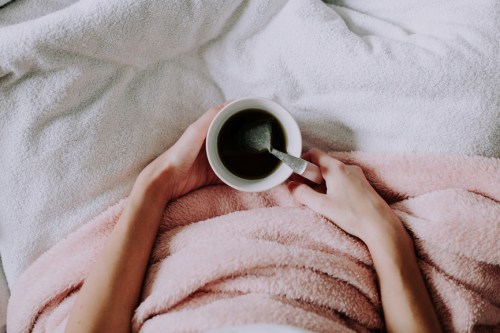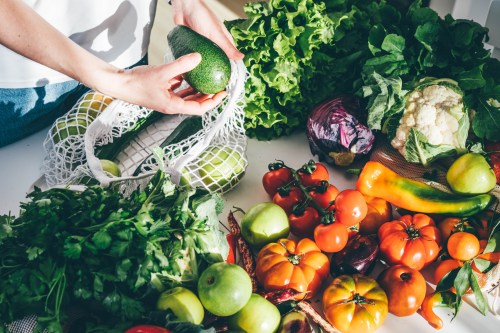Our editors independently select these products. Making a purchase through our links may earn Well+Good a commission
Here’s How Long You Should Let Tea Steep for Maximum Health Benefits
Discover how long you should leave your tea bag in for, according to tea expert, Steve Schwartz, so you can finally brew the perfect cup.

When the world seems loud and overwhelming, chamomile and English breakfast can’t solve your problems, but they can make the moment just a little bit better. If you’ve been sipping tea all your life but still aren’t sure how long to steep tea, fear not. Below, we’re steeping ourselves in the art of brewing tea correctly.
Experts in This Article
tea expert and author of Art of Tea
When it comes to steeping your tea, there’s no wrong way necessarily, says award-winning tea blender, Steve Schwartz, author of Art of Tea: A Journey of Ritual, Discovery, and Impact. However, there is a strategy for brewing a better experience for you tastebuds and yield a more beneficial cup.
How long should you leave a tea bag in?
Each variety of tea has a peak “maturation” point and temperature in which it tastes the best and offers the maximum amount of benefits. “The benefit of pulling the tea out at a designated time is that you’re preventing it from reaching its past-maturation point,” Schwartz says.
Most importantly: Follow the package instructions for both steep time and temperatures! (I know, I know: You love to rebel, but they are there for a reason.)
Green tea, for example, prefers a lower water temperature and a brief steeping time to produce the best flavor; oolong, on the other hand, can be steeped multiple times and continue to extract those flavors and benefits.
Is it bad to leave a tea bag in water for too long?
So what happens when you leave your tea in longer than recommended? In short: Not too much. According to Schwartz, it’s nothing dire; it just won’t produce the best-tasting cup of tea possible.
On the bright side, steeping the tea for a longer period will potentially help release even more of its health benefits. “You will certainly extract more benefits the longer you steep a tea. You’ll get more flavonoids, polyphenols, and catechins, but you’ll also extract more caffeine and tannins, which can lead to a more bitter, unpalatable liquid the longer the leaves remain,” Schwartz says. As the tea expert explains, it’s important to keep in mind that longer brew time equals higher caffeine levels, which is important for those sensitive to high levels of caffeine.
That said, according to research on tea leaf antioxidant extraction and steep time, tea leaves will reach a natural saturation point (i.e. the stage at which no more of a substance can be absorbed into a vapor or dissolved into a solution). So to each their own, but it comes down to flavor preference more than anything else. Perhaps a longer-brewed tea is exactly your cup of tea—that is, if you’re the bitter type (puns intended).
The two golden rules for ideal tea brewing time
It’s a balancing act. You want your tea to have a smooth, well-balanced, bitter-free flavor and you want to reap every last health perk from the leaves.
This is why Schwartz recommends following two simple rules for the perfect cup of tea every time. First: Invest in high-quality, whole leaf teas, as these varieties have a higher concentration of benefits. “Because they haven’t been ground down, they tend to yield a higher nutritional profile,” he says. Matcha, for example, hails from a whole green tea leaf and is potentially 137 times more potent than green tea.
Second, and most importantly: Follow the package instructions for both steep time and temperatures! (I know, I know: You love to rebel, but they are there for a reason.)
“We want people to have the best experience when they drink our teas, so we conduct rigorous tests—everything from over- and under-steeping leaves to playing with different temperatures—to find what we believe works best (generally, one to three minutes), while understanding that there is a range of times and temperatures people have to work with,” says Schwartz. A lot of thought has gone into those instructions; they won’t lead you astray.
“You will certainly extract more benefits the longer you steep a tea. You’ll get more flavonoids, polyphenols, and catechins, but you’ll also extract more caffeine and tannins, which can lead to a more bitter, unpalatable liquid the longer the leaves remain.”
Other factors that can affect tea flavor
It’s important to keep in mind that tea is extremely volatile, especially when exposed to elements such as heat and light. As such, it’s important to apply the appropriate tea storage methods to maintain its freshness for as long as possible. “Tea leaves are dry, meaning they’ve lost 97 percent of their moisture, and as a result they are susceptible to absorbing moisture and strong aromas,” Kyle Stewart, co-owner of The Cultured Cup and one of the few certified tea specialists in the world, says.
On that note, Stewart says there’s three main components you’ll want to make note of when determining the best way to keep tea fresh: the type of container, the temperature, and the amount of light exposure it gets.
First and foremost, you’ll want to keep your tea in a tight-sealed container away from any strong odors or smells around the house. This will help reduce the risk of your teas tasting off once ready to brew. Plus, will keep your dried tea leaves away from moisture than can promote spoilage.
Next, you’ll want to stash it somewhere dark and away from direct sunlight. Think: A cupboard or pantry that’s far away from a windowsill. Finally, you’ll want to keep your delicate tea leaves away from any extreme temperatures (both hot and cold). This means away from hot areas in your kitchen (such as the stove) and not in your fridge. A cool, but not too cool area of your home will be just right.
Of course, like most things in life, there will be some exceptions, including for pu’er tea (a fermented tea) that’s best stored in something breathable, or matcha that can be placed in the freezer in an airtight container to prevent it from absorbing odors around the kitchen.
A creative use for leftover tea bags
Pro tip: Have plenty of leftover tea bags after your *successful* tea-making sesh? Find creative ways to reuse tea bags and reduce waste that’ll benefit the environment and you and the long run. Think: Turning your tea bags into fertilizer for your plants, sprout new plant seedlings (as demonstrated in a recent TikTok video by @creative_explained), a relaxing tea bath, season a dish you’re cooking, or even as a natural odor absorbed around the house. Now those are some quali-tea ideas, wouldn’t ya say?
BTW, do you get tea headaches? You may have an intolerance or sensitivity.
Here’s all the benefits you get from sipping matcha:
Sign Up for Our Daily Newsletter
Get all the latest in wellness, trends, food, fitness, beauty, and more delivered right to your inbox.
Got it, you've been added to our email list.










